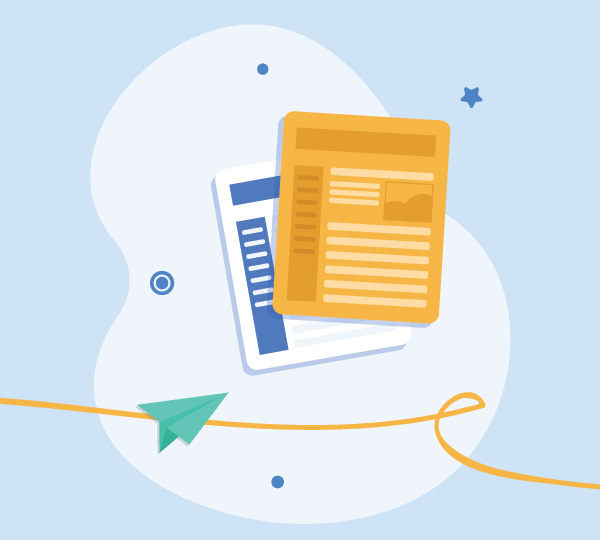
Email marketing is the most important digital marketing channel, with an ROI of $42 for every $1 spent according to a 2019 report from Data & Marketing Association.
Are you ready to start using more advanced features and strategies in your email marketing efforts? Let us show you our top tips on how you can start increasing engagement and getting more conversions.
In this series of Advanced Email Marketing Techniques, we’ll cover the following:
- Part 1: Email Re-Engagement Campaigns
- Part 2: Subscriber List Segmentation
- Part 3: E-Commerce Abandoned Cart Automation
- Part 4: Welcome Email Automation
- Part 5: Activity-Based Email Automations
- Part 6: Email Drip Campaigns
Please let us know if you’d like to see any other topics covered in future series.
Activity-Based Email Automations
We’ve already covered two activity-based email types in the previous parts of this series. An Abandoned Cart Automation is based on the activity of not completing a purchase. A Welcome Email Automation is based on the activity of joining the email list.
Now, let’s talk through other types of activities subscribers take that could trigger an email automation.
Subscriber Data Activity-Based Email Automations
In our past series, we’ve talked about how important it is to collect and store as much subscriber data as possible. This allows us to send highly targeted emails based on subscriber interests and activity. You can use Tags, Merge Fields, and Date data to send automated emails.
Tagged Contacts
Tagging your subscribers based on their interests is a simple way to use data to create an automation. Tags could be used when importing subscribers from a specific sign up source. Then, use that tag to target those subscribers with a relevant message or follow up.
Merge Field Data
Using merge fields is another way to segment subscribers and target them with relevant messaging.
For example, we use merge fields to add subscribers based on website activity such as downloading our e-book. When a user enters their email on our lead form to download our e-book, they are subscribed to our email list and added with the Merge Field “ADA Ebook Interest”. When subscribers are added to our list with this Merge Field, an automation begins to send an immediate email message with a link to download the guide.

Welcome Email Automation
One of the most common activity-based email automations is the Welcome Email. Reference part 4 of this series to learn all about Welcome Email Automations.
If you want to go further than a standard welcome, you can also use this opportunity to engage new subscribers with an onboarding or educational series. Set up a series of onboarding messages or educational messages that send one day after the next to engage and inform your new subscribers about your product or service.
Date-Based Emails
Use data such as your subscribers’ birthday, anniversary of when they became a customer, or other date-based information to send a special message.
Here’s an example from Dreamhost we enjoy getting each year:
E-Commerce Activity-Based Email Automations
If you run an e-commerce website or have purchased from one, you’re already familiar with E-Commerce Activity-Based Email Automations. Usually stores will send receipts and shipping updates by default. The transactional emails are the most basic activity-based automated emails.
Here are some ideas for additional e-commerce automations that are less transactional and more marketing-focused:
Product Follow-Ups
Product follow-up emails are triggered by the purchase of a product. These could include a specific product, any product, or a product in a specific category.
First-Time Customer Thank You
This automation sends to customers who have just made their first purchase. Once they make a second purchase, they will not receive this follow up message or message series.
VIP Customer Rewards
Segment your subscribers into a VIP list based on purchase activity and reward them with special coupons or announcements.
For example, your VIP segment could be based on a lifetime spend of $200+ and a total number of orders greater than 2. Once your customer’s purchase activity places them in this segment, the email or series of emails is triggered.
Re-Engage Lapsed Customers
Send an email to customers who have made at least one purchase, but haven’t bought anything recently. MailChimp has a detailed guide for how to Create a Customer Re-Engagement Automation here.
Source: MailChimp
Abandoned Cart Email Automation
Encourage customers to complete their purchase if they left an item in their cart. We covered this automation in detail in Part 3 of this series on E-Commerce Abandoned Cart Automation.
Conclusion
As you can see, each automation type begins with a trigger, and that trigger is based on stored data.
Triggers include campaign activities such as sent, opened, clicked, did not click, etc. a specific campaign. Audience triggers such as sign up, tag added, joins group, etc. could also be used. Of course these triggers can also be based on e-commerce activities such as purchased/did not purchase, time since purchase, lifetime spend, etc.
For a full list of trigger types, reference MailChimp’s guide to All Classic Automation Triggers.
For a full list of automation types, default trigger settings, and segments, reference MailChimp’s guide to Classic Automation Types here.
Ready to get started? Schedule a complimentary consultation with us today.

